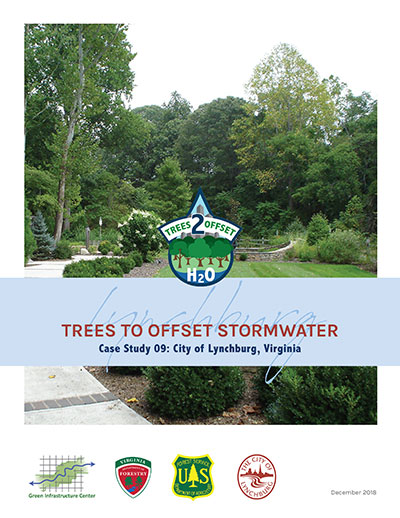Green Infrastructure Center, Inc.
GIC maps natural assets to create green infrastructure plans and green prints.

Lynchburg Trees to Offset Stormwater
This project Trees to Offset Stormwater is a study of Lynchburg’s tree canopy and its role in taking up, storing and releasing water. This study was undertaken to assist Lynchburg in evaluating how to better integrate trees into their stormwater management programs. More specifically, the study covers the role that trees play in stormwater management and shows how the city can benefit from tree conservation and replanting. It also evaluates ways for the city to improve forest management as the city re-develops.
This report includes those findings and recommendations that are based on tree canopy cover mapping and analysis, the modeling of stormwater uptake by trees, a review of relevant city codes and ordinances, and citizen input and recommendations for the future of Lynchburg’s urban forest. More specifically, the following deliverables were included in the pilot study:
• Analysis of the current extent of the urban forest through high resolution tree canopy mapping,
• Possible Planting Area analysis to determine where additional trees could be planted,
• A method to calculate stormwater uptake by the city’s tree canopy,
• A review of existing codes, ordinances, guidance documents, programs and staff capabilities related to trees and stormwater management, and recommendations for improvement,
• Two community meetings to provide outreach and education,
• Presentation about the pilot studies as a case study at regional and national conferences, and
• A case book and presentation detailing the study methods, lessons learned and best practices.
This is one of 12 case study reports produced by GIC for the Trees to Offset Stormwater Project.
You can view the Summary Report here.
You can learn more about this project on our Trees and Stormwater page here.
Back to Resources